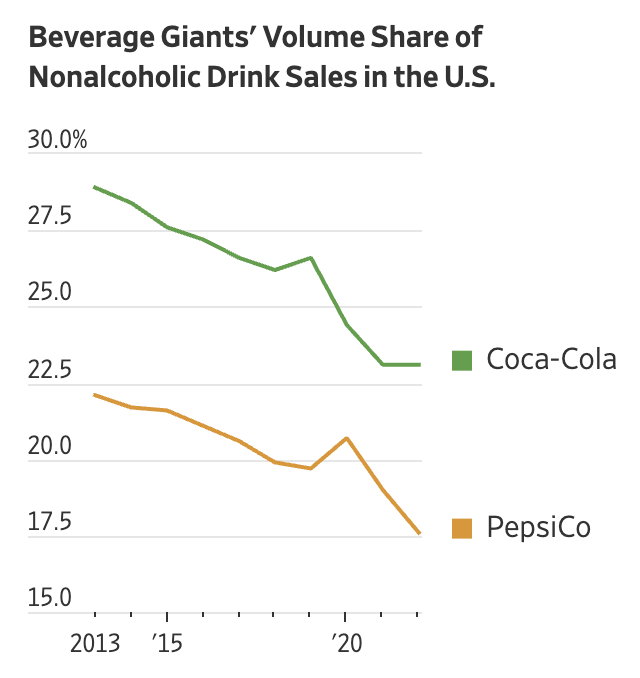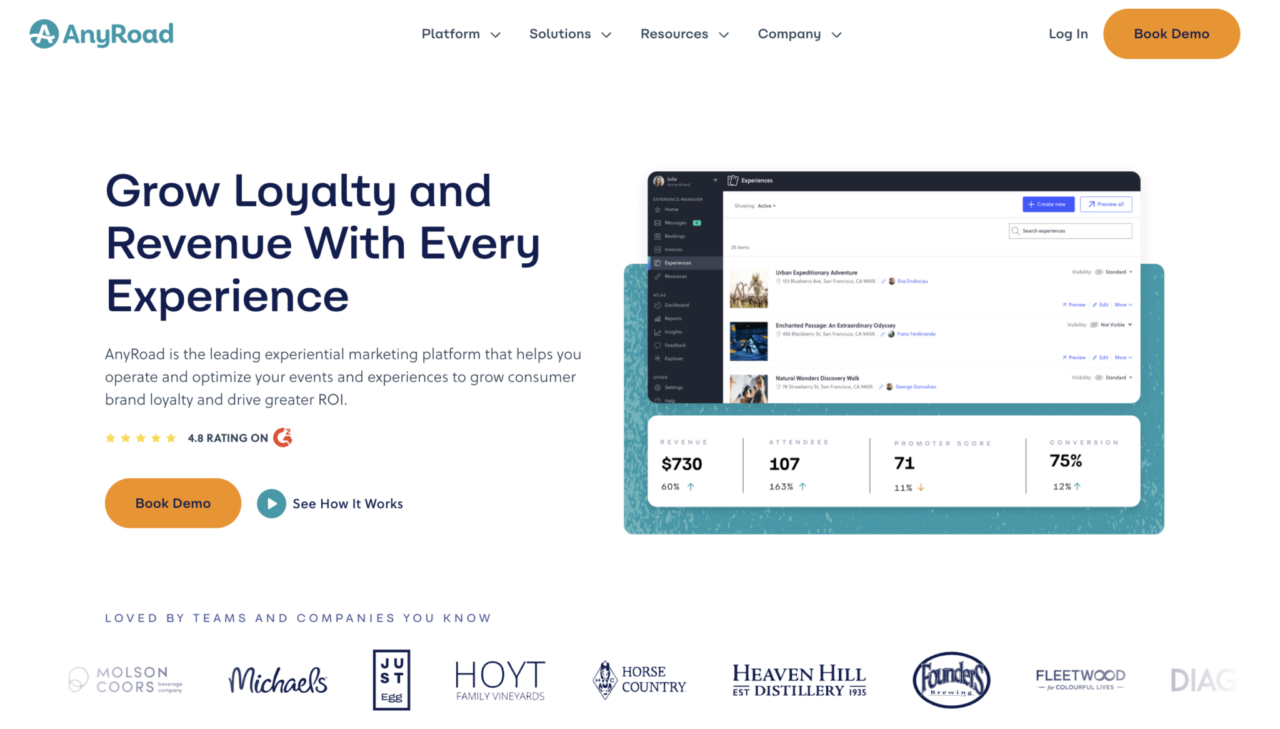Coca-Cola, the beverage giant that almost every person on the planet recognizes, has an arsenal of marketing strategies that have stood the test of time.
However, even iconic brands need to adapt and evolve, and that’s exactly what the soft drink brand has been up to lately.
Let’s take a look at the ways the Coca-Cola marketing strategy has shifted, and how that sidesteps culture wars, embraces AI and leans into event marketing.
A Brand for All, Not Just Some
If you’ve been wondering whether Coca-Cola has taken a side in today’s polarized social and political landscape, the answer, for now, is a resounding “No.”
The company has intentionally distanced itself from politics, human rights issues and social causes, contrasting the approach taken by Bud Light.
That’s not to say these matters aren’t important, but Coca-Cola believes its mission doesn’t involve choosing sides. This move seems to mirror other successful companies like Coinbase whose emphasis is geared more toward core missions and Shopify, who expressed their desire to avoid divisive distractions they call “side quests.”
When your brand is as internationally recognized as Coca-Cola, you have to consider a multitude of perspectives. The company states unequivocally that they welcome all individuals, irrespective of their political, religious or sexual preferences. By steering clear of making statements that favor one group over another, Coca-Cola aims to be a brand for everyone.
It’s crucial to understand that companies often align themselves with causes that are genuinely reflective of their mission and values. But when it becomes a mere branding exercise, consumers can see right through it. Authenticity is key!
The real takeaway here? Stick to your mission and the rest will follow. If you lose sight of it and wander off, it might not only hurt your brand, but your bottom line, too.
You May Also Like:
* Strike Marketing: What We Can Learn from the Hollywood Strike
* 4 Lessons We Can Learn from the Barbie Movie Marketing Strategy
Pivoting from Web3 to AI
Change is the only constant, and Coca-Cola knows this well. A year ago, everyone was buzzing about Web3, blockchain and the metaverse. Coca-Cola was initially planning to enter these spaces, but ultimately decided against it. Why? Because they knew where the attention had shifted: Generative AI.
Even Coca Cola’s own head of strategy, Pratik Thakar, commented that businesses should realign their focus and resources on investing in generative AI versus Web3 and NFTs. For them, staying relevant is not just an option, it’s a necessity. By embracing AI, they’re refocusing themselves on what’s practical and actionable in the present moment.
When you’re a global brand, the spotlight is always on you, so maintaining relevance is not a one-time affair, but an ongoing process. Coca-Cola recognized that while blockchain and metaverse technologies hold long-term potential, what’s essential right now is AI. In other words, they went where the eyeballs are, leaving aside what’s not yet ripe for mass adoption.
So, what’s the takeaway? Don’t be afraid to change your strategy when the winds shift. Not every trend warrants your attention or investment. Know when to move on and where to pivot.
Creating Experiences Over Ads
Over the years, we’ve seen a drop in Coca-Cola’s traditional advertising, particularly on TV:

Instead, they are channeling resources into event marketing.
The rationale is straightforward: Coca-Cola already enjoys extraordinary brand recognition. At this point, increasing visibility is less important than enhancing consumer engagement.
Walk past any major event and you’ll see Coca-Cola trucks and banners all around. Whether it’s the Super Bowl, a film festival or the U.S. Open, this soda brand is there, creating an experience rather than just selling a product. This strategy aims to make the brand not just visible, but memorable.
However, this doesn’t mean they’ve given up on traditional advertising altogether. For less popular brands under the Coca-Cola umbrella, conventional marketing remains crucial. These smaller brands don’t yet have the broad recognition that Coca-Cola does, so a balanced approach is needed to gobble up more market share.
Experiential Strategy
Coca-Cola doesn’t need to promote its brand in the same way that most companies do anymore. Being a iconic household name, the beverage giant is leaning more toward experience-based marketing.
If you haven’t heard of AnyRoad, it’s a leading experiential marketing platform that works with various beverage brands:

Although we have no way of knowing if Coca-Cola uses it, the effect of building strategies around customer experience is exactly the momentum that the brand is riding on right now.
As a business, are you focusing only on selling your products, or are you also selling experiences?
Are you staying true to your core mission and values? And, most importantly, are you willing to adapt and evolve with changing trends?
The reason Barnes & Noble lost the big race against Amazon (back when Amazon was still predominantly a book-selling website) is because they didn’t take refining their presence online very seriously until it was too late. It was their reluctance to shift with the trends that people were following that led to their inevitable stagnation.
But the Coca-Cola marketing strategy is something we ought to get inspired by. Pay close attention to its contemplative actions when it comes to its marketing. Its efforts to remain neutral, keep up with technological trends and shift toward experiential marketing offer valuable insights into building a resilient and adaptable brand:

Summary: The Coca-Cola Marketing Strategy
It’s not always clear knowing which trends to follow. Many die as quickly as they appear, and that can create a massive pool of decision fatigue for marketers. That’s why we encourage you to temper every opportunity to engage with something new and consider how it will affect the longevity of your brand.
Will a strategic choice sow division? Will it damage the reputation of your brand down the road? These are vital questions to continue asking yourself with every new event, situation or trend that comes about.
Coca-Cola’s evolving approach teaches us this:
- Stay True to Your Mission: Your company’s focus should be laser sharp. Diversions into social or political advocacy should align with your core values, not just be a branding exercise.
- Be Agile and Adaptive: Whether it’s pivoting from the metaverse to AI or from TV ads to experiential marketing, be prepared to change course based on where consumer attention is flowing.
- Experiences Over Exposure: If your brand is already well known, shift the focus from mindless advertising to creating memorable experiences.
- Invest in Specialized Tools: Don’t shy away from leveraging platforms that can help you execute your strategies more efficiently.
Coca-Cola may be an industry giant, but its recent shifts in marketing strategy offer actionable insights for businesses of all sizes. And as always, the golden rule is to stay adaptable and keep your finger on the pulse of consumer wants and needs.
If you’re ready to level up your business growth, Single Grain’s marketing experts can help!👇
For more insights and lessons about marketing, check out our Marketing School podcast on YouTube.



